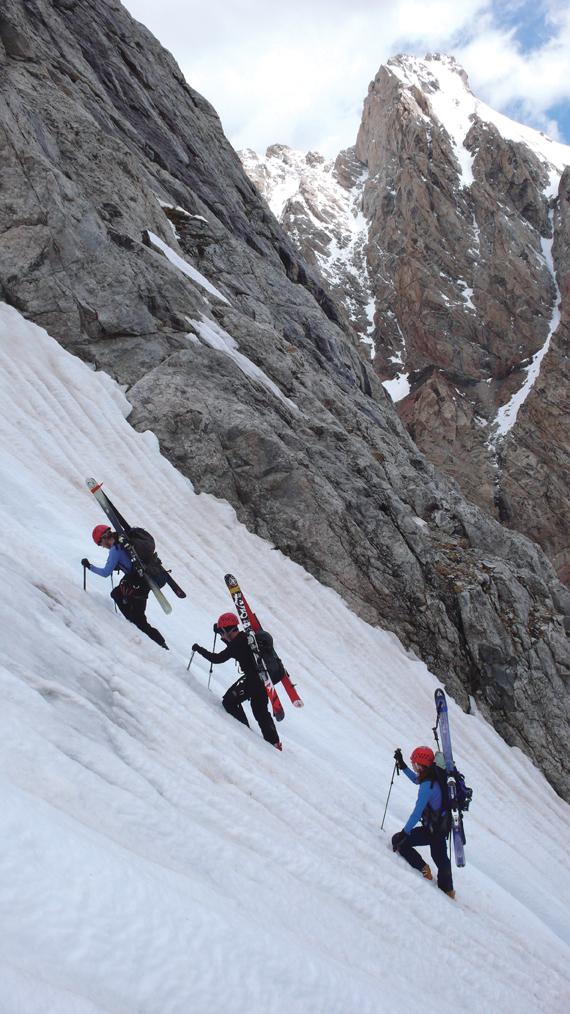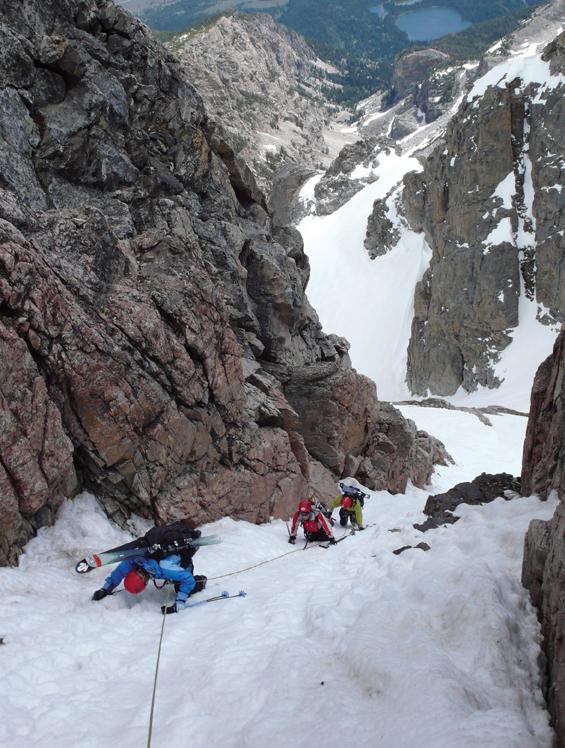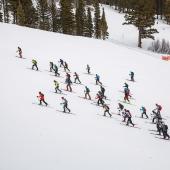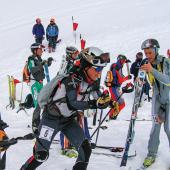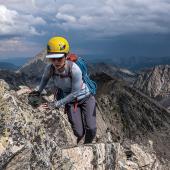Mountain Exposure
Throughout history people have been inspired by mountains in different ways. Some for the beauty and solitude, and others for the recreation they offer—such as the challenge of ascending and descending them. In the spring of 2007, Kate Siberell, 15, Nina Hance, 14, and Michael Asay, 16, participated in an amazing and inspiring ski-mountaineering trip to the Tetons sponsored by the Hans Saari Memorial Fund. Hans was a ski-mountaineer who grew up in Bozeman and died after taking a fall on Mont Blanc du Tacul, in Chamonix.
The fund offers scholarships to teenagers with some ski-mountaineering experience. Like Hans, we have enjoyed the thrill of ripping down the mountain and skiing the many steep and narrow couloirs of the Ridge at Bridger Bowl, so we were really excited about this camp. The Tetons were a great location. The weather during the course, held June 11-15, was perfect: sunny and cool. Our guides and instructors were Bean Bowers and Hans Johnstone of Exum Mountain Guides.
Day one. We found Bean and boarded the Bridger Gondola. At the top of the lift, we shouldered our packs, heavy with the weight of ski-mountaineering gear, and started our two-and-a-half-hour hike to Cody Bowl—the “classroom.” Bean explained the parts of an ice axe and crampons and the proper use of these tools in technical situations, including rappelling, belaying, self-arrest, climbing, and glissading. We hiked up a northeast-facing slope practicing different crampon techniques: the French Step, pied marche, and peid a plat. We obviously needed to work on these things, because we were tripping and falling all over ourselves!
Bean had us practice self-arrest for the next two hours. We had to think twice before throwing ourselves headfirst and backward down the mountain with 17 sharp metal points on our feet and in our hands, because the task was extremely counterintuitive (and really scary!). At the end of the day we stashed most of our gear around a large granite boulder and trudged out with considerably lighter packs. On the gondola ride down we learned and practiced useful mountaineering rope knots. We arrived at the bottom tired, dazed, and thinking of sleep.
Day two started out much the same… except that we were very tired and sore. Upon reaching our gear stash, we strapped skis and poles on packs, put on crampons, grabbed ice axes, and prepared to ascend Cody Peak. Bean reminded us that “the one constant rule of ski-mountaineering is you always hike up what you plan to ski down.” This in mind, we kicked steps up one of Cody Peak’s hair-raising couloirs: Four Shadows. The descent of this couloir consisted of a rappel over a six-foot snow cornice onto a 42-degree slope and a ski run of approximately 800 vertical feet. Putting total faith into the rappel device, rope, and snow anchor was difficult and scary. Still, we managed to shred this big-mountain couloir. The corn-and-mush spring conditions were fun but tiring. At the bottom, our legs gave away underneath us, and we flopped down into the snow with huge grins on our faces. Back to our gear cache; we packed up all our equipment and hiked back to the top of the gondola.
On day three, we arrived at Lupine Meadows Trailhead in Grand Teton National Park with gear for a three-day trip. Our packs weighed a heavy 50 pounds and our shoulders and backs soon began to ache. The hike to base camp in Garnet Canyon was all uphill and took around four-and-a-half hours, punctuated with water, snack breaks, and even an exciting black bear encounter along the way. We camped in The Meadows of Garnet Canyon, a beautiful, flower-filled oasis among the granite-filled canyon—complete with a gurgling stream and flat places to pitch a tent. After setting up base camp we put skis on our packs, boots on our feet, and hiked up to a massive granite boulder field where we practiced our scrambling skills. Having ski boots on and carrying a heavy ski pack made this simple task challenging. When we got to the top we put on our skis and carved down 900 vertical feet of “Cave Couloir” corn, right back to base camp.
Day four was the biggest day of the course: We were going to climb and ski the Middle Teton. As beginner mountaineers, this was a big deal. The first stage of the ascent involved scrambling up a scree field, then up the Middle Teton Glacier. In the second stage, we put on our harnesses and crampons, got out our ice axes, and climbed up into a tight chute. Our lives depended totally and completely on the ice axes and our carefully placed feet; if we slipped, the axe was all we had to save ourselves from tumbling down over cliffs and into crevasses. The extreme physical effort of climbing at such a high elevation made breathing difficult. We concentrated on completing each exhalation, so no carbon dioxide remained in our lungs.
At the top of the chute, 40 feet from the summit, we encountered a 12-foot-tall overhanging cornice blocking our way. On both sides of the chute were sheer rock walls. These obstacles, along with time constraints, kept us from reaching the actual summit (so close, yet so far away…). At the top of the chute, just under the cornice, we practiced putting on and taking off skis in the narrow, 53-degree slope. Total concentration and awareness of our every move was a must, because one wrong step could mean falling to our deaths. We soon discovered that the chute was too skinny to side-slip or negotiate with hop turns, so we packed up our skis and down-climbed on belay. Once we were out of the narrows, we re-assessed the conditions: ice patches, crevasses, and four-foot-deep, ice-coated runnels (read: vertical bobsled course). We decided the safest way to ski was on belay and we did that for three rope lengths. Finally, with helpful pointers from our guides, we unclipped and ripped our way down the seemingly endless run. Back at base camp, the words, “I can’t believe I just did that!” rang in our heads as we happily crawled into our sleeping bags.
On day five, we awoke to another glorious morning. Before leaving Garnet Canyon we squeezed in one last ski run. We hiked up to the base of Nez Perce and Cloudveil peaks and traversed over to “Cave Coulior,” our last run in the Tetons. At the trailhead, we went for a refreshing swim in a frigid creek and celebrated the camp’s success with a barbeque.
This was one of our first “big ski-mountaineering” experiences. We learned lots of technical skills, how to trust our equipment and conquer our fears, the importance of teamwork and communication, and became aware of the incredible risk and adrenaline rush that surrounds this extreme sport. We knew we’d be back soon.

